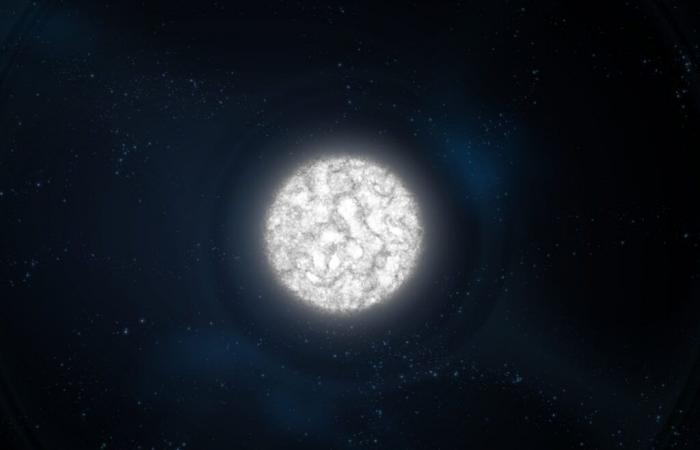Astronomers recently discovered an Earth-like planet about 4,000 light years away that could provide insight into the fate of our own planet several billion years from now, when our dying Sun transforms into a white dwarf .
The inevitable destiny of the Earth and the Sun
Like all stars, our Sun is destined to evolve over time. Now halfway through its existence, it will eventually run out of nuclear fuel in about five billion years. At that point, it will expand and become a red giant, a star likely to be larger in diameter than Earth's current orbit. Mercury and Venus, the first two planets of the Solar System, will be entirely swallowed up by the Sun. As for the Earth, it could find itself in a new, more distant orbit or suffer the same fate.
This process of transformation of the Sun will culminate with the ejection of its outer layers, leaving behind only a dense and very hot star called woman blanche. This star will be much smaller, but will continue to attract what remains of its procession of planets. If Earth survives this red giant phase, it will find itself in an orbit twice as distant as today's, well beyond the habitable zone, transformed into a cold and barren planet.
A discovery that sheds light on the future of the Earth
The recently discovered system, consisting of a white dwarf and an Earth-like planetlooks a lot like what could happen to our own Solar System in the distant future. The planet is in fact in an orbit twice as large as that of the Earth around the Sun today.
This discovery is not just a simple astronomical curiosity; it also allows scientists to better understand the final stages of the evolution of stars like the Sun, as well as the effect of these transformations on the planets around them. According to the researchers, although this planet is now outside the habitable zone of its white dwarf, astronomers believe that it could have supported conditions suitable for life when its star was still a normal star comparable to the Sun.
The gravitational microlensing technique
Astronomy is full of amazing techniques for detecting invisible objects in the cosmos. The planet in question was discovered using a method known as gravitational microlens. This technique is based on a phenomenon predicted by Einstein's theory of relativity: the gravity of a massive object, such as a star, can bend space-time and amplify the light of a more distant star that is in its alignment.
In 2020, this planet briefly amplified the light of a more distant star, also located in the Milky Way, approximately 25,000 light years of the Earth. This effect then allowed the researchers to estimate the presence of a white dwarf and two planets, including one the size of Earth.
To confirm that this star is indeed a white dwarf, astronomers used the Keck II telescope in 2023. Using adaptive optics that eliminate blur caused by Earth's atmosphere, they confirmed that the microlensing star could not not be a normal star. Its low luminosity and its mass clearly indicate that it is a white dwarfremnant of a star similar to the Sun.
A distant future for humanity?
Although this scenario still seems distant, it poses a fascinating question: what might become of humanity when the Sun begins to fade? Some scientists believe that as the Sun expands into a red giant, the habitable zone of the Solar System, where life as we know it can exist, will move beyond Earth, around giant planets like Jupiter or Saturn.
However, we know that some of the moons of these planets, such as Europa, Callisto or Ganymede around Jupiter or even Enceladus around Saturn, have oceans hidden beneath their surface jelly. If these moons found themselves temporarily in the new red giant habitable zone of the Sun, they could then for a time offer a potential refuge for humanity.
The philosophical implications of this discovery
This discovery not only offers a fascinating insight into stellar evolution, but it also raises deep philosophical questions about the fragility of our planet and life itself. By observing an Earth-like planet survive the transformation from a star to a white dwarf, we can glimpse the resilience of celestial bodies in the face of cataclysmic change. But will this resilience be enough to preserve life? If the Earth were to one day follow the same path, this discovery could encourage humanity to think today about ways to ensure its sustainability, whether by exploring other solar systems or preparing for the challenges of the future. future of our own star.
The team of researchers, led by Keming Zhang, now a postdoctoral fellow at the University of California, San Diego, announced their discovery in the journal Nature Astronomy.






